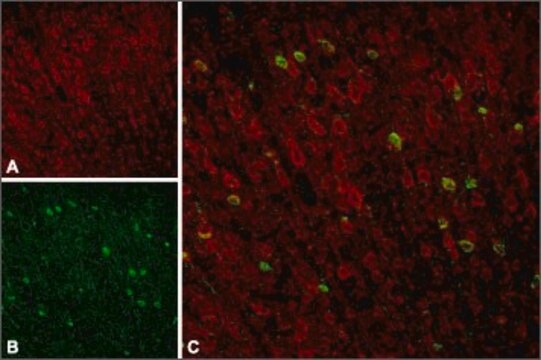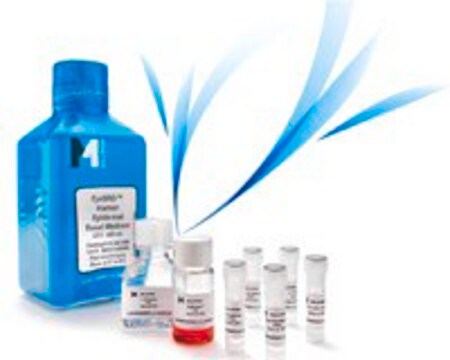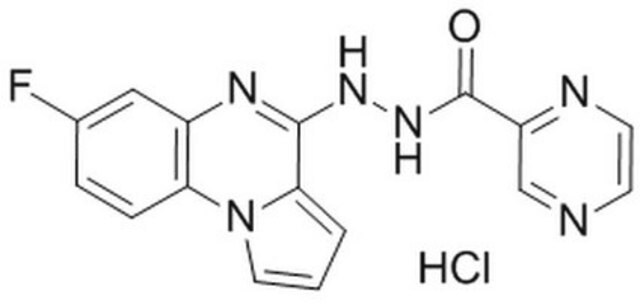おすすめの製品
由来生物
bovine brain (microvessels)
品質水準
包装
pkg of 500,000 cells
メーカー/製品名
Cell Applications, Inc
成長モード
Adherent
核型
2n = 60
形態
Endothelial
テクニック
cell culture | mammalian: suitable
関連疾患
acquired immunodeficiency syndrome/human immunodeficiency virus (AIDS/HIV); ischemia/reperfusion injury
輸送温度
dry ice
保管温度
−196°C
詳細
Lot specific orders are not able to be placed through the web. Contact your local sales rep for more details.
BBMVEC provide an excellent model system to study many aspects of endothelial function and disease, especially those related to the blood-brain barrier (BBB).
BBMVEC have been utilized extensively in research, for example to:
BBMVEC provide an excellent model system to study many aspects of endothelial function and disease, especially those related to the blood-brain barrier (BBB).
BBMVEC have been utilized extensively in research, for example to:
- Show, along with Bovine Aortic Endothelial Cells, that brain microvasculature is more sensitive to pathogenesis, compared to large vessel endothelia, by demonstrating that C-reactive protein (CRP), a cardiovascular risk factor, induces higher oxidative stress in the brain microvasculature due to higher local expression of the CRP-receptors CD16, CD32 and of the NAD(P)H-oxidase subunit p22phox (Closhen, 2010) and that brain microvascular endothelial cells show higher sensitivity to oxidative stress generated by advanced glycation end products due to stronger VEGF expression leading to increased permeability (Niiya, 2006, 2012); illustrating another difference between endothelia, alkalosis was shown to activate ERK in aortic, but not brain microvascular endothelial cells (Motz, 2006)
- Show that stronger blood-brain barrier (BBB) function can result from shear stress which acts through VE-cadherin mediated activation of Tiam/Rac1 pathway (Walsh, 2011) which in turn leads to upregulation of occludin and ZO-1 expression and increases their localization to tight junctions (Colgan, 2006, 2007) and by fluvastatin, which activates NO synthase and causes NO-dependent dephosphorylation of endothelial MLC via the MLC phosphatase (Kuhlmann, 2006), and is able to prevent glutamate-induced damage to the BBB (Kuhlmann, 2008); conversely, BBB breaks down under hypoxic conditions and as the result to CRP exposure due to MLCK and NADPH-oxidase activation, indicating that increased contractility and oxidative stress are involved in development of post-stroke brain edema (Kuhlmann, 2007, 2009)
- Support the key role of ROS by showing that activation of antioxidant genes by Nrf2 reduces brain vascular leak from acute high altitude exposure known to induce ROS (Lisk, 2013);
- Determine that IL-1β, ZYM, and LTA increase the permeability of the BBB to small ions, while TNF-α and lipopolysaccharide disrupt the endothelial layer integrity to allow passage of larger molecules (Pyrgos, 2010)
- Investigate the role of basolateral environment in modulating BBB by regulating expression and biochemical properties of the tight junction proteins, occludin and ZO-1 (Colgan, 2008)
- Show that during cerebral ischemia increased expression of TWEAK and Fn14 in the endothelial-astrocyte interface facilitating leukocyte transmigration and recruitment to the ischemic tissue (Haile, 2010)
- Study the mechanisms of BBB penetration by fungal pathogen Cryptococcus neoformans during invasive cryptococcosis (Stie, 2012a, b)
- Demonstrate opposite effects of two osteoponin isoforms on the angiogenesis in the in vitro capillary assay and VEGF secretion by endothelial cells (Blasberg, 2010)
- Demonstrate that apigenin, a dietary flavonoid, activates Ca2+-activated K+ channels in endothelial cells leading to a hyperpolarization followed by a Ca2+ influx causing increased NO production followed by Akt dephosphorylation (Erdogan, 2007);
- Investigate the mechanisms of accumulation and effects of amyloid deposits on brain vasculature in cerebral amyloid angiopathy (Kandimalla, 2009; Agyare, 2013)
- Develop gene and drug delivery methods for crossing the BBB based on polymer-based nanoparticles (Agyare, 2008; Gil, 2009, 2012) or adenovirus or gold nanoparticles modified to be transported via transcytosis pathway (Tang, 2006; Prades, 2012), as well as to improve the general drug loading/delivery stealth dendrimer carriers (Yang, 2008)
細胞株の由来
Microvessels
アプリケーション
endothelial function, growth factor expression, cell permeability, tight junction study, endothelial layer integrity, leukocyte transmigration, angiogenesis, in vitro capillary assay, growth factor secretion, K+ channel study, drug development
構成
Bovine Brain Endothelial Cell Basal Medium containing 10% FBS & 10% DMSO
調製ノート
- 2nd passage, >500,000 cells in Bovine Brain Endothelial Cell Basal Medium containing 10% FBS & 10% DMSO
- Can be cultured at least 12 doublings
継代と培養方法
Please refer to the BBMVEC Culture Protocol.
保管分類コード
11 - Combustible Solids
WGK
WGK 3
引火点(°F)
Not applicable
引火点(℃)
Not applicable
適用法令
試験研究用途を考慮した関連法令を主に挙げております。化学物質以外については、一部の情報のみ提供しています。 製品を安全かつ合法的に使用することは、使用者の義務です。最新情報により修正される場合があります。WEBの反映には時間を要することがあるため、適宜SDSをご参照ください。
Jan Code
B840-05:
試験成績書(COA)
製品のロット番号・バッチ番号を入力して、試験成績書(COA) を検索できます。ロット番号・バッチ番号は、製品ラベルに「Lot」または「Batch」に続いて記載されています。
資料
Technical information for working with bovine brain microvascular endothelial cells including thawing, subculturing and cryopreservation
ライフサイエンス、有機合成、材料科学、クロマトグラフィー、分析など、あらゆる分野の研究に経験のあるメンバーがおります。.
製品に関するお問い合わせはこちら(テクニカルサービス)







